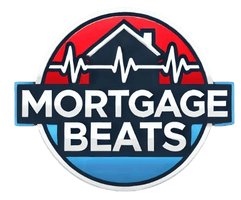Understanding First-Time Home Buyer Programs
First-time home buyer programs exist to help newcomers break into the housing market by offering lower down payments, reduced interest rates, and more flexible credit requirements. These programs come in various forms, including government-backed loans like FHA, state-specific grants, and special initiatives from local housing authorities. While they share the common goal of making homeownership more accessible, each program operates with distinct rules and benefits that require careful evaluation.
Eligibility for these programs typically depends on factors like income limits, credit scores, and completion of homebuyer education courses. Some define “first-time buyer” more loosely than others—often considering anyone who hasn’t owned a home in three years as qualifying. This expanded definition means even previous homeowners might qualify for certain programs if they’ve been out of the market for several years.
At NorCal Real Estate & Financial Service, we help potential buyers navigate these definitions and requirements. Our advisors take time to explain how different programs work and which might align best with a client’s financial situation and homeownership goals.
The Advantages of First-Time Buyer Programs
The most significant benefit of first-time buyer programs is their ability to reduce upfront costs. Many allow down payments as low as 3-3.5%, compared to the standard 20% expected for conventional loans. Some programs even offer down payment assistance in the form of grants or forgivable loans, dramatically lowering the barrier to entry for buyers with limited savings.
Beyond financial assistance, these programs often provide educational resources that help novice buyers understand the responsibilities of homeownership. Many require completion of counseling courses that cover budgeting, maintenance basics, and long-term financial planning—valuable knowledge that benefits buyers throughout their ownership journey. Some programs also offer post-purchase support, including access to financial counseling and even home repair assistance in certain cases.
NorCal Real Estate & Financial Service helps clients maximize these benefits while avoiding potential pitfalls. We’ve seen firsthand how the right program can transform homeownership from a distant dream into an achievable reality for buyers who might otherwise struggle to enter the market.
The Hidden Drawbacks You Should Consider
While first-time buyer programs offer valuable benefits, they often come with trade-offs that buyers should weigh carefully. Many programs require mortgage insurance—either upfront premiums or ongoing monthly payments—that can add significantly to long-term costs. Some state and local programs impose income limits that might disqualify buyers in higher-cost areas where home prices outpace regional income averages.
Other restrictions can include property type limitations, geographic boundaries, or requirements to live in the home as a primary residence for a set number of years. Some down payment assistance programs function as second mortgages with balloon payments due if the homeowner sells or refinances within a certain timeframe. These conditions can limit financial flexibility just as life circumstances change.
NorCal Real Estate & Financial Service provides clear-eyed analysis of these potential drawbacks. We help clients look beyond the attractive surface benefits to understand the full implications of each program’s terms and conditions before committing.
FHA Loans: The Most Popular First-Time Option
The Federal Housing Administration’s loan program remains the go-to choice for many first-time buyers, offering 3.5% down payments and more forgiving credit requirements than conventional mortgages. FHA loans accept credit scores as low as 580 (or even 500 with 10% down), making them accessible to buyers with limited or damaged credit histories. These government-backed loans also permit higher debt-to-income ratios than many conventional products.
However, FHA loans come with mandatory mortgage insurance premiums (MIP) that add to monthly payments. Unlike conventional private mortgage insurance (PMI), FHA’s MIP typically lasts for the life of the loan unless the buyer puts down at least 10%, in which case it drops off after 11 years. The program also imposes loan limits that vary by county, which can be restrictive in high-cost housing markets.
NorCal Real Estate & Financial Service helps clients determine whether FHA’s benefits outweigh its costs for their specific situation. We compare FHA options against other programs and conventional loans to identify the most cost-effective path to homeownership.
State and Local Assistance Programs
Many states and municipalities offer specialized programs that complement or enhance federal first-time buyer initiatives. These can include down payment assistance grants, low-interest second mortgages, or tax credits that make homeownership more affordable. Some programs specifically target certain professions like teachers, healthcare workers, or first responders with enhanced benefits.
California’s MyHome Assistance Program, for example, provides up to 3.5% of the purchase price in deferred-payment junior loans for down payment and closing costs. New York’s SONYMA program offers low-interest mortgages with down payments as low as 3%. These localized programs often have funds that run out quickly, requiring buyers to act fast when applications open.
NorCal Real Estate & Financial Service maintains up-to-date knowledge of regional programs across our service areas. We help clients identify and apply for these valuable resources while navigating their often-complex application processes.
USDA and VA Zero-Down Options
Two standout programs allow qualifying buyers to purchase homes with no down payment whatsoever. USDA loans serve buyers in designated rural areas (which surprisingly include many suburban communities), while VA loans benefit military service members, veterans, and eligible surviving spouses. Both programs offer competitive interest rates and more flexible credit requirements than conventional mortgages.
USDA loans feature income limits based on area median incomes and require mortgage insurance, though at lower rates than FHA. VA loans charge a funding fee instead of mortgage insurance, which can be rolled into the loan amount. Both programs require the property to meet certain condition standards and be occupied as the buyer’s primary residence.
NorCal Real Estate & Financial Service helps eligible clients evaluate whether these zero-down options make financial sense. We analyze the long-term costs compared to other programs to ensure clients choose the most advantageous path to ownership.
Down Payment Assistance Programs
Separate from loan programs, down payment assistance (DPA) comes in various forms including grants, forgivable loans, and low-interest second mortgages. Some programs provide funds that never need repayment as long as the buyer stays in the home for a set period (usually 3-5 years). Others offer deferred-payment loans that only come due when the home sells or refinances.
Eligibility often depends on income limits, home price caps, and completion of homebuyer education. Some programs target specific neighborhoods as part of community revitalization efforts. While these offers can seem incredibly generous, buyers should carefully review terms—some assistance comes with higher interest rates on the primary mortgage or restrictions on future refinancing.
NorCal Real Estate & Financial Service helps clients navigate the complex landscape of DPA options. We identify legitimate programs with favorable terms and steer buyers away from offers that might create future financial complications.
When Conventional Loans Might Be Better
Despite their higher down payment requirements, conventional loans sometimes offer better long-term value than first-time buyer programs. Buyers with strong credit (740+) and 20% down can avoid mortgage insurance entirely, potentially saving thousands over the life of the loan. Conventional loans also offer more flexibility regarding property types, including condos and investment properties.
As home prices rise, some buyers find that first-time program limits make it difficult to purchase in their desired neighborhoods. Conventional conforming loans (up to $766,550 in most areas for 2024) and jumbo options provide higher purchasing power for those who qualify. Refinancing options are also typically more straightforward with conventional products.
NorCal Real Estate & Financial Service runs detailed comparisons for clients weighing program loans against conventional options. Our analysis considers both immediate affordability and long-term financial impacts to recommend the optimal solution.
Alternative Strategies for First-Time Buyers
For buyers who don’t qualify for or want to avoid first-time programs, several alternative strategies exist. Co-buying with family members or trusted partners can combine resources to meet conventional loan requirements. Some employers offer housing assistance as part of relocation packages or employee benefits.
Rent-to-own arrangements allow buyers to lock in a purchase price while improving their credit or saving for a down payment. ADU (accessory dwelling unit) purchases enable buyers to offset mortgage costs with rental income from day one. Some buyers choose to purchase multi-unit properties, living in one unit while renting the others to cover expenses.
NorCal Real Estate & Financial Service explores all viable paths to homeownership with our clients. We think creatively about each buyer’s unique circumstances to develop customized strategies that might not involve traditional first-time programs.
How NorCal Real Estate & Financial Service Guides Your Decision
Choosing between first-time home buyer programs requires careful analysis of both immediate needs and long-term financial goals. Our advisors take a comprehensive approach, evaluating credit profiles, income stability, future plans, and local market conditions to recommend optimal solutions. We go beyond basic program eligibility to consider how each option will perform over 5, 10, or 30 years of homeownership.
We maintain relationships with multiple lenders offering various first-time buyer products, allowing us to compare terms and negotiate on our clients’ behalf. Our proprietary analysis tools model different scenarios to show exactly how program choices affect both upfront costs and long-term wealth building through home equity.
With NorCal Real Estate & Financial Service, first-time buyers gain a trusted partner who simplifies complex decisions. We demystify program requirements, streamline application processes, and ensure clients make informed choices they won’t regret years later.
Conclusion
First-time home buyer programs offer valuable opportunities but aren’t universally the best choice. The right decision depends on individual financial situations, local market conditions, and long-term homeownership goals. While these programs help many buyers overcome initial hurdles, they sometimes carry hidden costs or restrictions that warrant careful consideration.
NorCal Real Estate & Financial Service brings clarity to this complex landscape. Our expertise helps first-time buyers navigate program options, avoid common pitfalls, and make decisions that serve their best interests both today and in the future.
Ready to explore your path to homeownership? Contact NorCal Real Estate & Financial Service today for personalized guidance tailored to your unique situation. Let us help you determine whether first-time buyer programs—or alternative strategies—offer the smartest route to achieving your real estate goals.
Ready To Get The Best Financial Advise, Email us at: Chris@mortgagebeats.com



